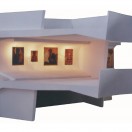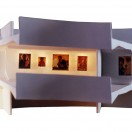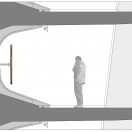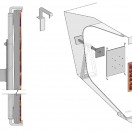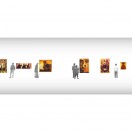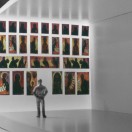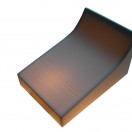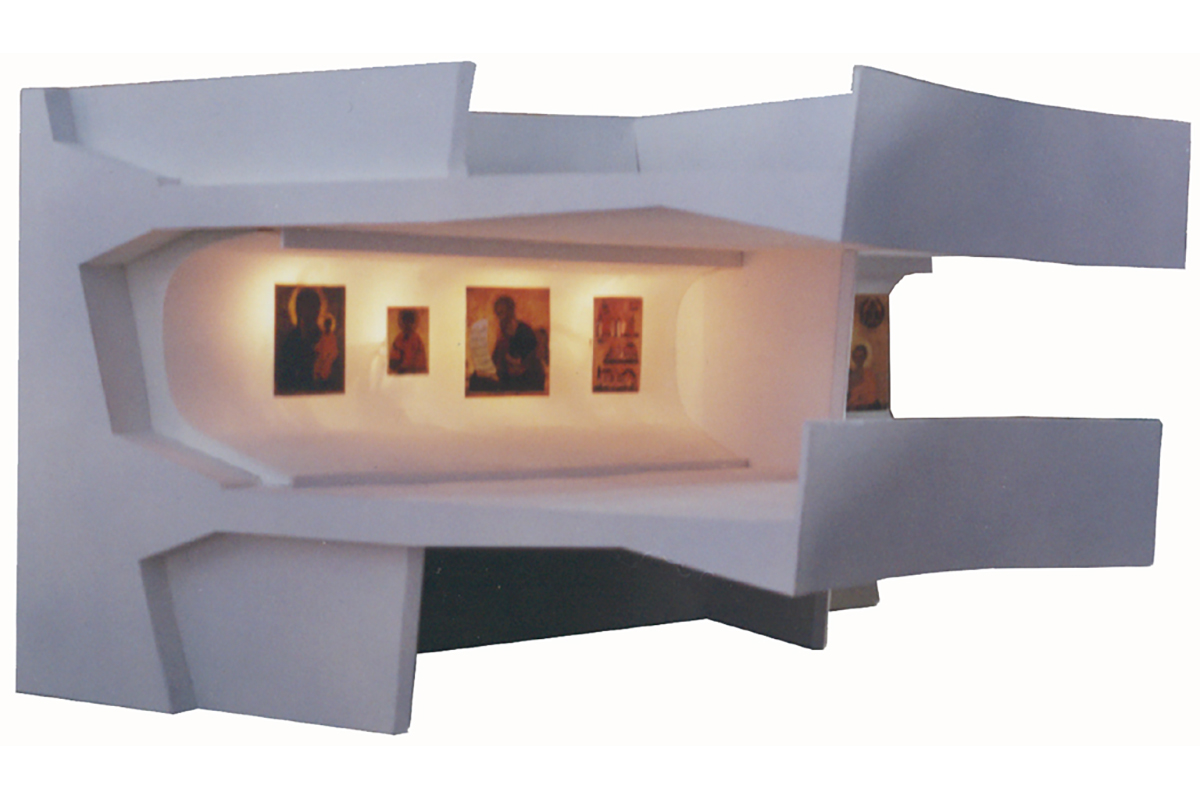
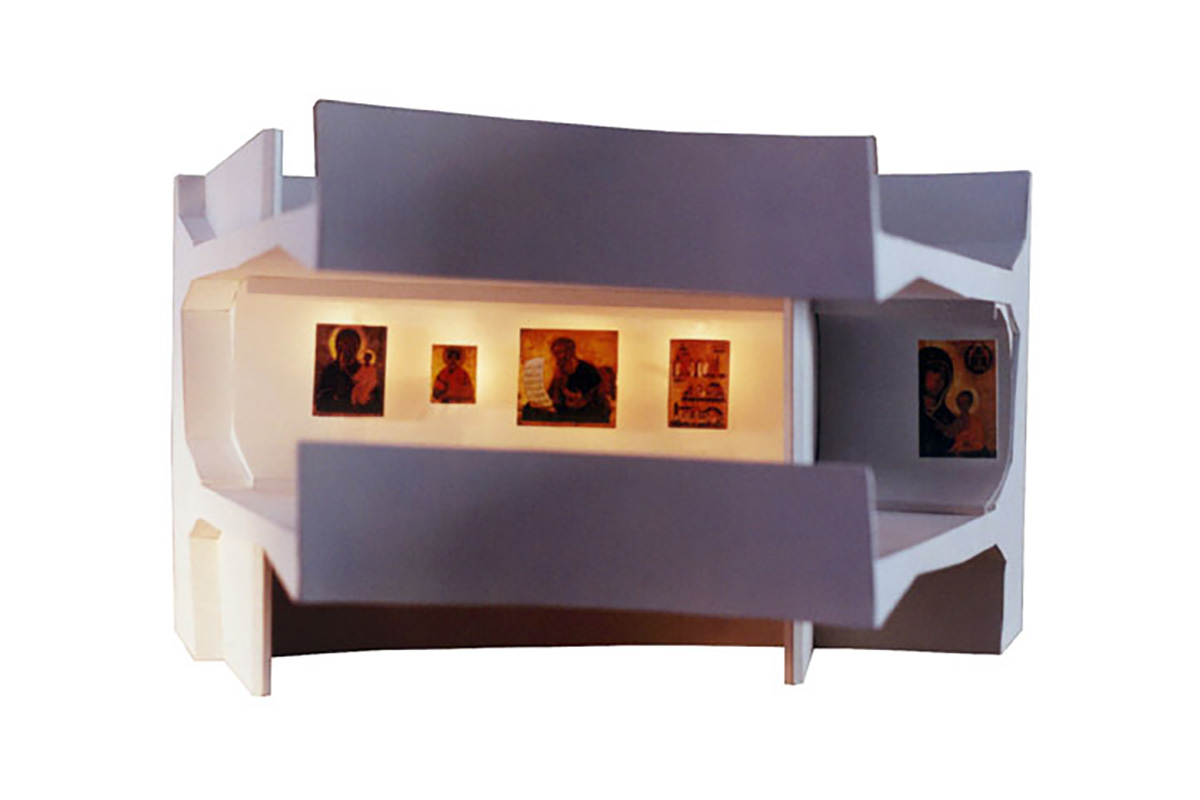
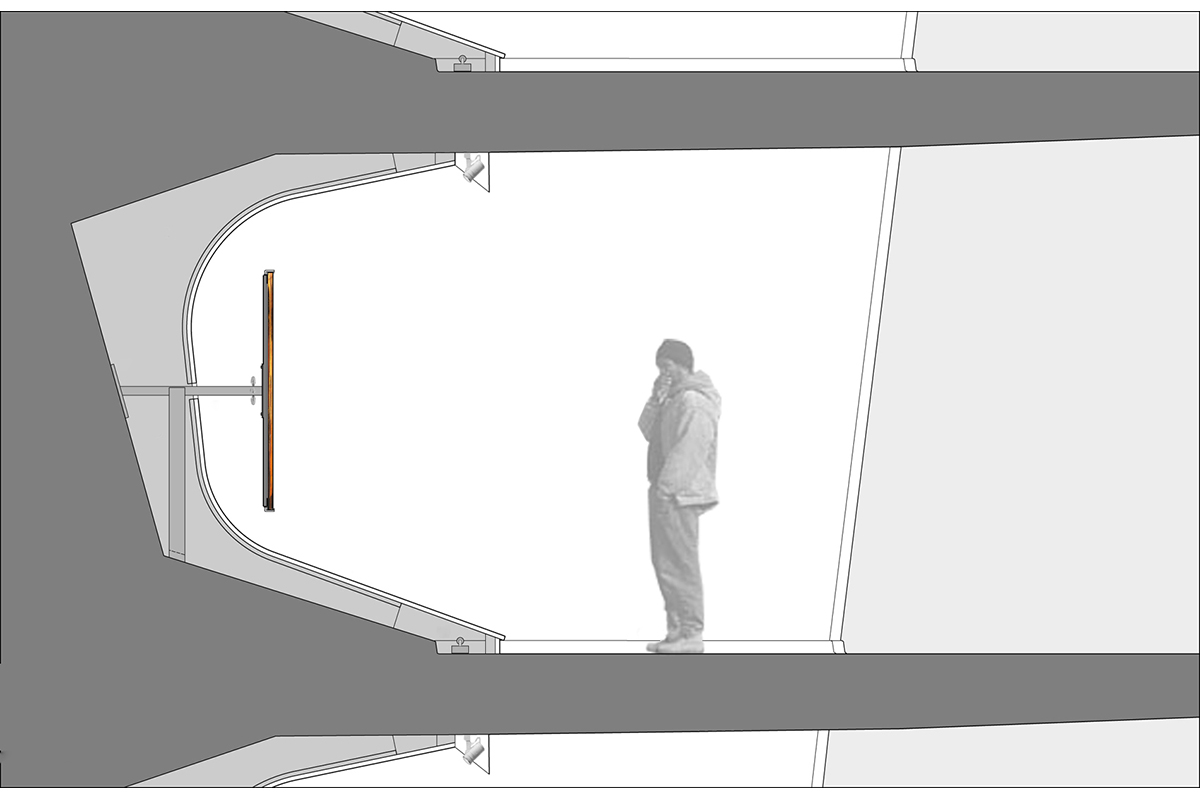
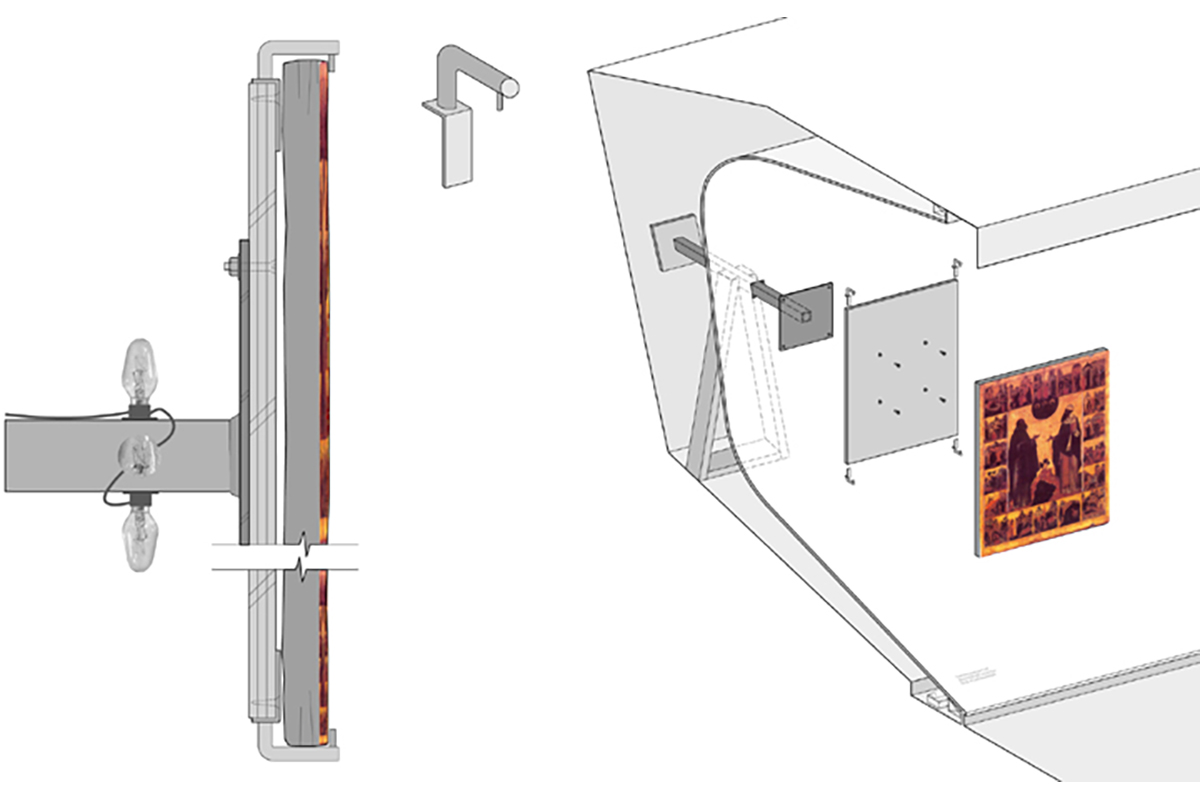
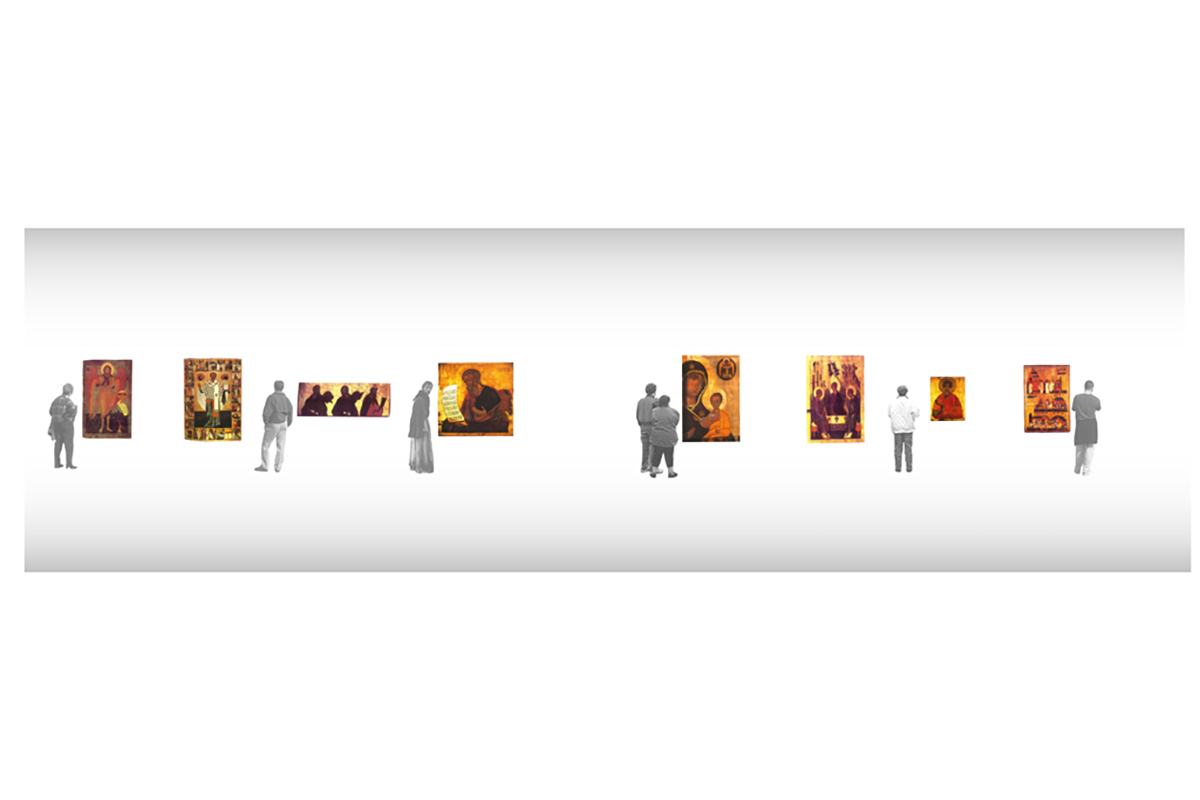

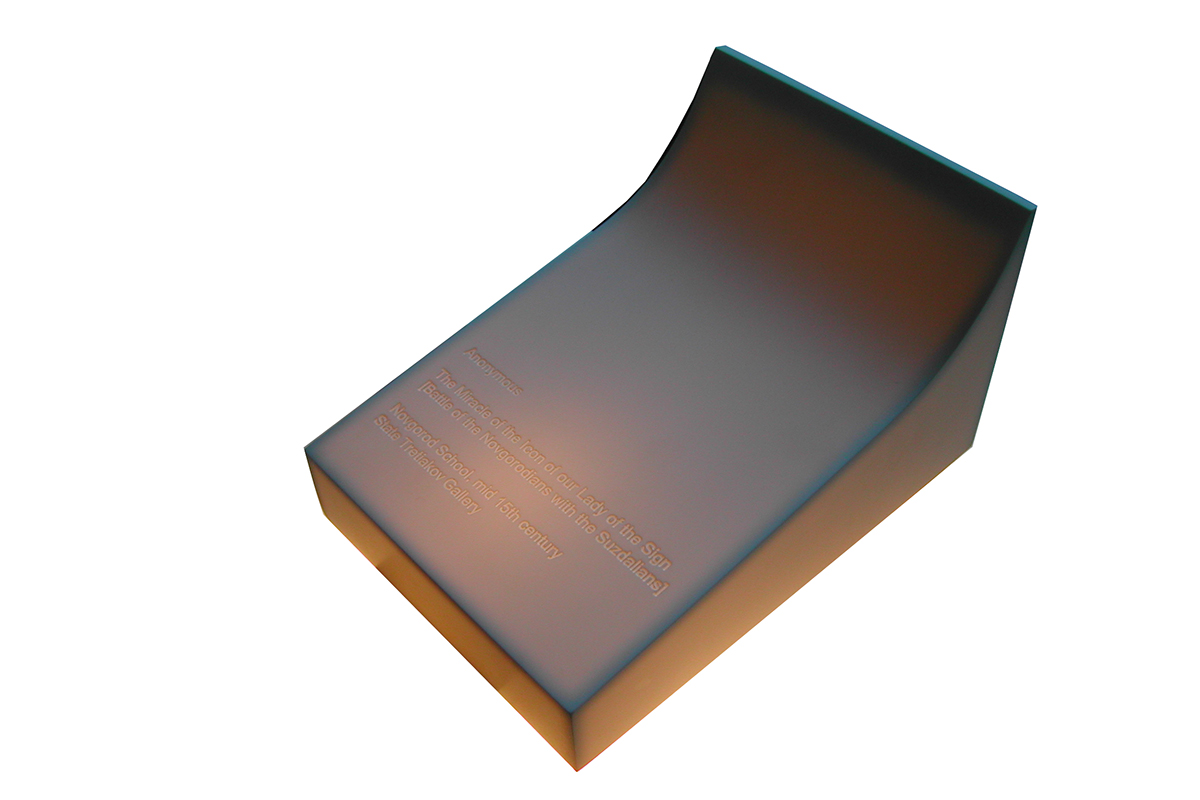
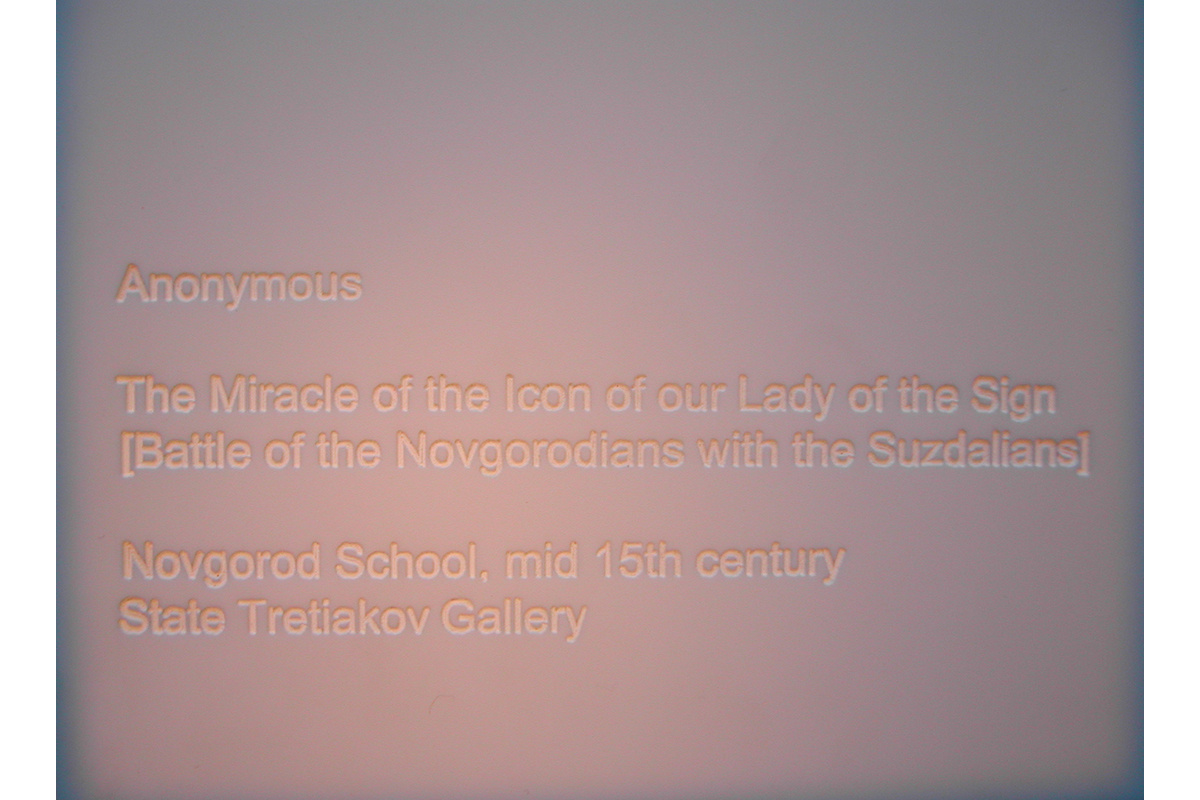
New York, New York
This proposal was the winning entry in an invited competition by the Guggenheim Museum in New York City for the design of an exhibition of Russian icon paintings from the 14th to the 16th centuries. It strives for an unmediated relationship between the icon, museum, and viewer through the subtle intervention of a continuous, gently curving surface that effectively erases the museum’s edges, pushing an already plastic space into an even more seamless continuum. Here the paintings can be pulled away from contact with any surface and softly back-lit, so as to appear floating in their own mystical space amid a gentle halo of light.
The competition brief also required the display of an iconostasis – a highly prescribed organization of images that acts as a threshold of divinity in the Russian Orthodox church, separating the material from the immaterial, the flesh from the spirit, Heaven from Earth. A small dark room is defined in the museum’s Tower Gallery, where the iconostasis is represented not as a physical structure, but as a structure of images, floating freely from the wall similarly to the paintings in the rotunda.
